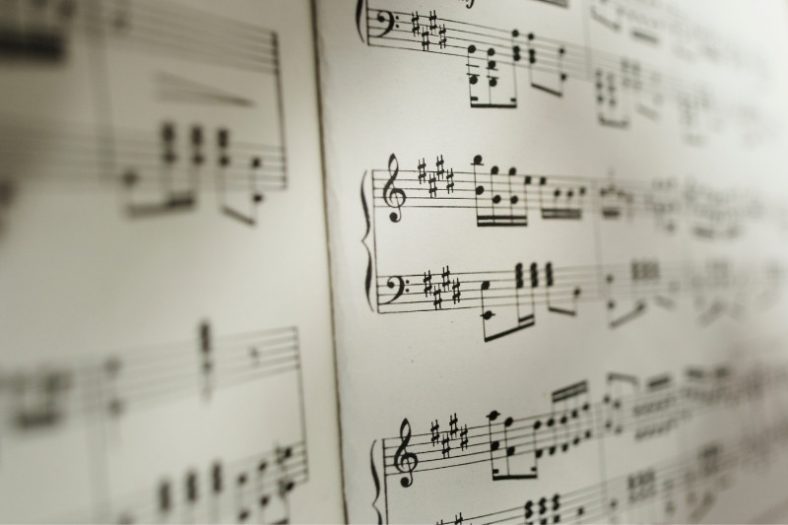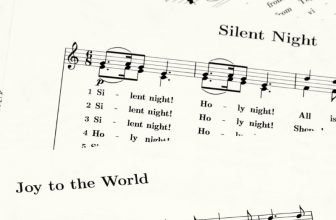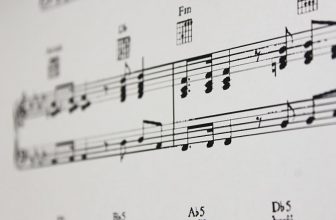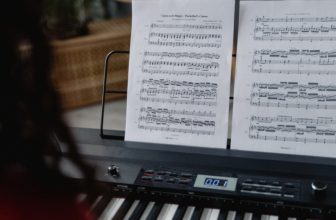What’s the Difference Between Modal Music and Tonal Music?

Modal music is a type of tonal music that makes use of modes, which are scales different from the basic major and minor keys, whereas tonal music is the name that describes all forms of music organized around a tonal center, also known as a root note.
The concepts of tonality and modality cannot be separated, because any mode is a permutation of a tonal scale. Technically speaking, the basic major and minor keys are modes too; however, the term ‘modal music’ is normally used to describe keys that are different from the basic major and minor keys.
In Western music, there are seven modes: Ionian (basic major), Dorian, Phrygian, Lydian, Mixolydian, Aeolian (basic minor), and Locrian.
To fully understand modality in music, it’s first necessary to grasp a few elementary music-theory concepts, such as scale, root note, and transposition.
Contents
What is a Scale?
In music, a scale is a limited sequence of notes dividing an octave. An octave is a group of 12 notes that never repeats. You can identify an octave in a keyboard by going from the lowest C (or any other starting point) to the second-lowest C, which is an octave higher.
A scale is a series of notes within the octave that can be harmoniously combined to create a musical composition. When you play a C Pentatonic scale, for instance, you should only use the notes C, D, G, E, and A. Naturally, you don’t need to limit yourself to one single octave – you can play any C, D, G, E, and A on the keyboard.
The most commonly used scales in Western music are the basic major and minor scales, which are composed of seven notes. On the keyboard, you can easily identify the C major scale by playing all the white keys: C, D, E, F, G, A, and B.
Scales make for an extremely useful musical composition technique that allows musicians to quickly combine chords and melodies that sound good together. Scales are also known as ‘keys’ and derive their name from their root notes.
What is a root note?
In music, root note refers to the note in the scale that functions as its tonal center. This note is identified by the scale’s name and has an important musical function: to work as the point to which a melody or chord progression is resolved. For this reason, the root note is commonly described as the “home” note.
If you’re playing a C major scale, you should use the note C to resolve your melodies and chord progressions. In the case of an A minor scale, the root note is A. Virtually all scales are named after their root note.
What is musical transposition?
In music, transposition is the act of changing the notes from one scale to another. Imagine you’re using a C pentatonic scale (C, D, G, E, and A) to play a basic melody. If that’s the case, you can say that your song is in the key of C pentatonic. If you want the same song to be played in the key of D pentatonic, all you have to do is change every note in it to the note that’s one tone above (i.e., two keyboards keys above).
By doing so, you’re transposing. To transpose a song from C pentatonic to D pentatonic, you simply have to change every C to a D, every D to an E, every G to an A, and so forth. While transposition can change the “color” and texture of a song, it doesn’t affect its melodic nature.
How can you play modal music?
To play modal music, you need to play a scale that’s not a basic major or minor scale. While these can be technically considered modes, the modal sound is usually associated with the alternative scales of Dorian, Phrygian, Lydian, Mixolydian, and Locrian.
Memorizing the note positions of each of these scales is one possible way of learning how to play modal music. However, it’s not the ideal method if you want to have a complete understanding of how modes work.
The best way to learn how to play modal music is by analyzing the way modality works within the C major scale. The C major scale is the most-used scale in music tutoring because it’s conveniently represented by all the white keys on the keyboard.
What’s the best way to learn modal music?
The best way to learn modal music is by understanding how it is fundamentally dependent on the root note. Did you know that the C major scale and the D Dorian scale use the very same seven notes but make for completely different modes? How is this possible?
This happens because a D Dorian scale is nothing but a C major scale in which the second degree of the scale (i.e., the note D) is used as the root note. By playing the same seven notes of the C major scale but with D as their root note, you’ll be playing a mode of the major scale – in this case, the Dorian mode.
Using the same logic, it’s easy to understand why the A minor scale is also a C major scale mode – it uses the same seven notes, but starts in the sixth degree of the scale (i.e., note A).
From then on, you can quickly deduce how to play all the modes of the C major scale:
- Use C as the root note to play the Ionian mode (basic major);
- Use D as the root note to play the Dorian mode;
- Use E as the root note to play the Phrygian mode;
- Use F as the root note to play the Lydian mode;
- Use G as the root note to play the Mixolydian mode;
- Use A as the root note to play the Aeolian mode (basic minor);
- Use B as the root note to play the Locrian mode.
To play a C Dorian mode (for instance), all you have to do is identify the notes in the D Dorian scale and transpose them down one tone (two keyboard keys). With a good grasp of transposition, you can use the information above to play any mode you’d like!
What are the seven modes of the major scale, and what makes each one of them special?
The seven modes of the major scale are Ionian, Dorian, Phrygian, Lydian, Mixolydian, Aeolian, and Locrian. What makes each one of them special is how they can be used to translate different musical moods. Understanding these musical moods is an excellent way of creating compositions that evoke a particular vibe or feeling.
Here’s a short description of what each of the seven modes of the major scale can be used for:
- Ionian mode – The most common mode in Western music, it is often associated with “happiness” and is used in popular children’s songs such as “Frère Jacques” and “Old McDonald.”
- Dorian mode – It’s considered to be a “nuanced” mode because it incorporates the typical sadness of a minor mode without getting too dark. It’s often considered to be a “neutral” musical mode.
- Phrygian mode – Usually described as the most “exotic” of modes, much due to its association with Flamenco music. It’s also very prominent in metal due to its tense minor second interval.
- Lydian mode – Used in many popular soundtracks, this mode is extremely versatile, and can sound both “soothing” and “grandiose.” It’s frequently considered to be a “mystical” mode, but it’s also perfect for creating “elegant” musical compositions.
- Mixolydian mode – Think of the Mixolydian mode as the Ionian mode that doesn’t get too happy. It’s “happy,” yes, but without being nauseating. The rock band AC/DC used this mode in most of their songs to great effect: it’s like a basic major scale but with a twist, which is perfect for taking the cliché away from a traditional pop-rock song.
- Aeolian mode – The basic minor mode is extremely recognizable, and most people would agree it sounds “sad.” It’s the go-to mode to evoke feelings of “melancholy,” but it’s unbelievably versatile and is used in countless rock songs that don’t sound as sad as one would expect.
- Locrian mode – Surely the “black sheep mode,” Locrian is deemed unusable by some musicians: after all, it misses a perfect fifth and includes a dissonant tritone. However, composers such as Björk have used this mode brilliantly to evoke a feeling of “eeriness,” “strangeness,” and “stillness.” It’s by far the hardest mode to play, but you shouldn’t snub it completely.





